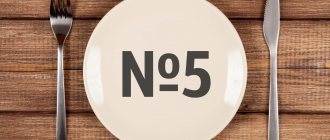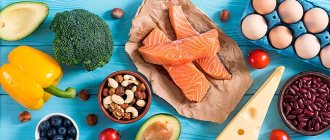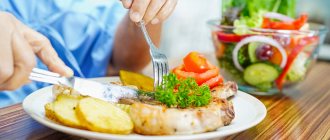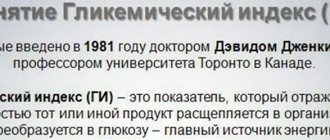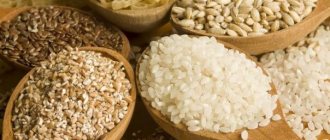For people with diabetes, nutrition plays a key role. It is very important to consume proteins, fats and carbohydrates in the correct ratio. The menu for diabetics should contain the necessary amount of vitamins and fiber for the healthy functioning of the body. The basic rule of nutrition for diabetics is that the energy from food must be completely consumed by the body, without any deposits. Proper nutrition can normalize the body's metabolism and reduce blood sugar levels.
The main goal in the treatment of both types of diabetes is to reduce the risk of stroke, heart attack, and other acute and ongoing diseases, as well as to maintain excellent health and resistance to colds and pathogenic flora. To achieve this, as a rule, a person must take into account the fractional method of nutrition (5-6 times a day in small portions).
Menu design principles
The diabetic menu is calculated based on the following criteria:
- age;
- weight;
- Lifestyle;
- physical exercise.
It is recommended to make calculations with the help of an endocrinologist or nutritionist; he should know the history of your illness. The specialist adjusts the patient’s diet based on his condition, body weight and individual characteristics of the body. For overweight diabetics, it is necessary to replace carbohydrates and fats with vegetable products, for underweight diabetics, it is necessary to increase the calorie content of food consumed. In summer and spring, it is recommended to increase the diet of fruits and vegetables.
The following foods are not recommended for type 1 and type 2 diabetics:
- baked goods, butter products;
- desserts high in calories (cream, ice cream, etc.);
- lard, pork (fatty meat);
- alcohol and tobacco products;
- sugar (a sweetener should be used);
- canned food, sausage;
- pickled and salted vegetables;
- fatty fish;
- sweets.
IMPORTANT! Sometimes doctors prohibit diabetics from using diabetic products, because the same sweeteners sometimes prevent the patient from losing weight.
How is nutrition different for type 1 and type 2 diabetes?
The main difference between type 1 diabetes is the use of insulin. However, proper and balanced nutrition is mandatory. Eating white bread, fruits with a high glycemic index, sweet juices, and chocolate is allowed in small quantities, while in case of type 2 diabetes it is best to exclude these foods. If the patient is not obese, sugar intake up to 50 g per day is allowed.
In type 2 diabetes, diet is directly the source of a healthy lifestyle. Normalizing the patient's weight plays a key role. It is necessary to reduce the calorie content of foods, not their quantity, in other words, adhere to a low-carbohydrate diet. If you overload your digestive system with carbohydrates, blood glucose levels increase and insulin cannot cope on its own.
Table No. 9
Table 9 is a specially designed diet for people with diabetes. This diet is rich in healthy and tasty dishes for diabetics. Its essence lies in the exclusion of foods with fast carbohydrates and moderate consumption of carbohydrates in general. Due to the slow increase in blood glucose levels, a person feels full for a long time. This also has a positive effect on the pancreas.
Every diabetic is required to familiarize himself with the principles and permitted foods of diet table No. 9
Dishes that may be included in the Breakfast diet:
- Fried eggs with pork breast.
- Omelet with vegetables, omelette with meat products (without processed foods), if desired, you can grate cheese into the omelette.
- Boiled eggs, low-fat yogurt, cod liver.
- Vegetable side dish, hazelnuts or almonds, black or green tea (not sweet).
Dinner:
- Pork (stewed) with herbs or cabbage.
- Baked chicken with vegetable side dish.
- Boiled meat with a salad of fresh vegetables.
- Boiled or baked fish.
- Pork thigh steak, fresh vegetables or salad.
- Homemade sausage with rye bread.
Diet variety depends entirely on your imagination and taste preferences.
Snack products:
- Almonds, hazelnuts or Brazil nuts.
- Boiled eggs.
- Baked boiled pork.
- Hard cheese.
- Avocado (quite expensive, but healthy product).
If it's time for a snack and you don't have anything on hand, you can eat raw eggs, which can be purchased at the store.
IMPORTANT! People diagnosed with type 1 and type 2 diabetes should keep a food diary.
The principles of this diet:
- fragmentation and regularity of food intake;
- each portion of food should be the same in volume and calorie content;
- permissible ratio of fats and carbohydrates;
- sufficient intake of vitamins and microelements by the body;
- mainly boiled, stewed or baked food.
Products and dishes excluded from the diet:
- smoked, spicy and fried foods;
- sugar and sugar-containing products;
- thick broths and soups;
- fermented milk products (fat);
- alcohol.
By following the prescribed diet, you significantly simplify and prolong your life.
Prohibited, permitted and limited products
Since nutrition for diabetes is the basis of therapy, it is necessary to clearly differentiate food. It is allowed to prepare dishes only from approved products, but it must be taken into account that depending on the culinary processing, the glycemic index of products may change.
What you need to give up
Pathology of the first type is controlled with insulin injections, but this does not mean that the patient is allowed to eat absolutely everything. The following are absolutely prohibited:
- confectionery products (pastry, cakes);
- sweet butter and puff pastries;
- products made from sweet choux and shortbread dough;
- chocolate + sweets, ice cream;
- fast food products and dishes;
- meat and fish products prepared by smoking;
- chips, flavored snacks, popcorn;
- mayonnaise-based fatty sauces;
- bottled tea, packaged juices, lemonade, and any other sweet drinks.
Other prohibited foods by category
| Meat | Conservation | Fish | Cereals | Flour products |
| pork, duck, goose | meat and sprat pate, canned fish, fruit in its own juice, preserves and jams, pickled vegetables | preserves, cod liver | sago, semolina, white rice | pasta categories B, C, 1st and 2nd class, pasties, white bun (loaf) |
Fruits on the menu are selected according to the glycemic index. For diabetes mellitus, fruits indexed with a number higher than 60 (figs, grapes, papaya, carom, guava) are not recommended.
Strictly controlled products
A separate category consists of limited (limited for consumption) products. The bulk of them are foods with an average glycemic index (from 30 to 70 units). The most popular include:
- root vegetables: potatoes and beets;
- semi-finished products: dumplings, khinkali, dumplings, etc.;
- flour products: durum pasta, pancakes, pancakes;
- melons and fruits: pumpkin, watermelon, melon, pineapple, banana, persimmon, mango, kiwi;
- Cereal dishes: millet, oatmeal, buckwheat porridge, couscous.
Fatty fish (sturgeon, halibut, capelin, mackerel) are necessary as a source of omega-3.6 fatty acids. Their presence in the diet is also limited. How often and in what quantity you can eat the listed foods must be agreed with your treating endocrinologist.
What is allowed
Since in diabetes the diet is based on fiber and protein products, the menu should include vegetables, fruits, meat and fish dishes. Diabetics with type 1 disease are allowed starchy carbohydrates daily. The limit is the amount of food eaten. These products include: potatoes, cereals and legumes. Recommended cereals are: barley, barley, buckwheat, wheat, oats.
Legumes are digested without the participation of insulin and contain a large amount of minerals. For patients with diabetes, legume and vegetable side dishes, bean, pea, and lentil soups are recommended. You can make salads and pates from legume products. Dairy and fermented milk products are welcome in the diet of a diabetic patient. The choice is based on the percentage of fat content of the products. Only curd mass and glazed cheese curds are prohibited. The fat content in products is allowed as follows:
| Cheese | Milk | Cream and sour cream | Yogurt | Cottage cheese | Ryazhenka |
| up to 40% | 2,5% | 10% | 2,5% | up to 9% | up to 4% |
It is preferable to eat eggs as an omelet or soft-boiled. Number of pieces per week – 3–5. Sweets and pastries occupy a special place on the menu. Desserts without glucose are available for diabetic patients. They can be purchased in specialized departments of supermarkets. It is better to prepare your own baked goods according to recipes for diabetics. Such dishes are based on the use of rye (linseed, corn) flour; sugar in them is replaced with fructose or stevioside.
The main condition for use is a strict limit. You can’t overeat, even on diabetic sweets. To prevent the food from being bland, it is allowed to flavor dishes with spices such as cinnamon, oregano (oregano), all types of peppers, and cloves. Protein products in the menu should be at least 20%. Sources of protein are:
| Poultry and meat | Fish and seafood | Mushrooms | Nuts |
| turkey, chicken, rabbit, veal, lean beef | navaga, telapia, blue whiting, pollock, crabs, shrimp, mussels, etc. | fresh (frozen), dry, canned champignons | all types |
Nuts should be eaten in doses, since the product has a high energy value and can also cause constipation. Recommended vegetable fats include olive, corn, flax, and sunflower oils. The amount of butter in the diet should be reduced as much as possible. This limitation is due to the ability of animal fat to accelerate the absorption of glucose, and also to be deposited in the form of cholesterol plaques on the walls of blood vessels. It is better to eat whole grain and rye bread.
Dietary nutrition for type 1 diabetes
In type 1 diabetes, the cells of the pancreas are destroyed, and the lack of insulin is compensated for by injections of insulin-containing drugs. It is important to control the dose and duration of insulin, as well as the amount of food consumed. Extreme attention must be paid to bread units (XE), 1 unit of XE = 10–12 g of carbohydrates. The daily norm should not be more than 25 XE, which means that you should not consume more than 4-5 XE at one meal. The number of bread units consumed must be calculated in order to correctly select the dose of insulin needed to digest foods.
Nutrition must be clearly balanced in chemical composition and include all the necessary vitamins and microelements. The approximate chemical composition looks like this: 100 g of proteins, 80 g of fats, 450 g of carbohydrates. The energy value will be approximately 2500 kcal.
The temperature of hot dishes should not exceed 60° C, and for salads and snacks - 15° C.
IMPORTANT! Consumption of clean water per day should be at least 1.5–2 liters.
Small, balanced and timely meals are the key to success on the path to diabetes treatment
Approximate daily diet including insulin intake:
- 8:00 – mainly protein foods (eggs, cottage cheese, meat);
- 8:15 – taking insulin medication;
- 9:00 – intake of carbohydrate foods (porridge, rye bread, potatoes);
- 12:00 – carbohydrate-containing food (bread allowed);
- 14:00 – lunch (without eating bread);
- 17:00 – taking insulin medication;
- 18:00 – carbohydrate-containing food (bread allowed);
- 20:00 – carbohydrate-containing food.
IMPORTANT! Failure to comply with the diet for type 1 diabetes leads to the occurrence of hyperglycemic coma.
Dietary nutrition for type 2 diabetes
Type 2 diabetes mellitus occurs due to excess weight. The body continues to produce insulin, but it is not active. Patients with this diagnosis can live for decades. It is very important to monitor your diet, load your body with physical activity and bring your weight to the required level. Meals are strictly fractional, intervals should not exceed 2–3 hours.
Sample menu for a day for type 2 diabetes:
Nutrition for diabetics
- 7:00 – breakfast: oatmeal with milk 200 g;
- 9:30 – lunch: boiled egg 1–2 pcs.;
- 13:00 – lunch: vegetable borscht – 200 g, roast of permitted meat – 70 g, 100 g of fresh vegetables, compote or natural juice from dried fruits – 200 ml, whole grain bread – 50 g;
- 16:00 – afternoon snack: 150 g cottage cheese casserole;
- 18:00 – dinner: baked or stewed fish with vegetables – 200 g;
- 21:00 – if you feel hungry, you are allowed to drink 250 ml of kefir.
Diet of an insulin-dependent patient
Before preparing your own diet, you should consult a specialist. It is better to show the finished menu option to your doctor. It is optimal to develop a menu for the week so as not to experience daily difficulties with choosing products.
Approximate digital norms of daily diet (in grams):
- cereal dishes – 50–60;
- potatoes – 60–70;
- whole grain bread – 150–2170;
- legumes and vegetables – up to 700;
- fermented milk drinks / cottage cheese / sour cream – 250 / 150 /10–15;
- protein (meat, fish) – up to 150;
- fruits and berries – 200.
Important! The figures are averaged. Specific values must be selected individually, taking into account the characteristics of the course of diabetes.
Possible options
In the developed sample menu, dishes can be swapped. Fruit and vegetable ingredients in the diet are also allowed to be replaced with analogues that are identical in GI and calorie content. For quick and high-quality cooking, it is best to purchase a multicooker.
Examples of dishes for diabetic patients
| Breakfast | Soup | Garnish | Basics | Lunch/afternoon snack |
| milk oatmeal with fruit; omelette with herbs; toast with Adyghe cheese + boiled eggs; wheat (barley) porridge in water with the addition of sour cream or butter; cottage cheese casserole cooked in a slow cooker | cabbage soup in chicken broth; mushroom soup; bean (pea) soup based on turkey or chicken; broth with veal (chicken) meatballs; fish soup from different varieties of fish; seafood soup with vegetables | lobio; Boiled potatoes; crumbly buckwheat or pearl barley porridge; vegetable puree or steamed vegetables; durum wheat pasta (durum) | boiled meat (veal, turkey, chicken); chicken breast baked in foil with tomatoes; vegetable stew with turkey; stewed cabbage with chicken (rabbit); stuffed peppers (stuffed cabbage rolls); fish baked with vegetables; cutlets (bits) from meat or fish | diabetic cheesecakes; pureed cottage cheese with fruit; yogurt; waffles or gingerbread for diabetics; fruit and berry jelly or puree; 100 g specially prepared baked goods |
About salads for diabetics
Vegetable salads (Greek, cucumbers + tomatoes, cabbage) must be present in your daily diet. Other recipes for type 1 diabetics:
- ¼ small head of cabbage + 1 raw beets + 2 raw carrots. Finely chop the cabbage, grate the carrots and beets. For dressing, use a mixture of lemon juice and olive oil. Spices - to taste.
- 150 g crab meat, 1 fresh cucumber, 1 onion, a bunch of dill, a can of canned seaweed. Cut the crab meat, cucumber and onion into cubes, add herbs and kelp. Season with natural yoghurt (sour cream) and a teaspoon of soy sauce.
A useful vegetable addition to the menu of diabetics is sauerkraut. To prepare a delicious salad, it is recommended to add chopped onions, fresh dill, and a little cranberries. Season with unrefined sunflower oil.
To taste, you can diversify the dish with grated apple
Multicooker dishes
There are a lot of diabetic recipes for slow cooker dishes. The device is easy to use and allows you to prepare food efficiently and quickly. Examples:
- Several parallel cuts are made in the chicken breast. The meat should be marinated in a mixture of garlic, soy sauce, pepper and vegetable oil for 1–2 hours. Insert tomato mugs and slices of Adyghe cheese into the cuts. Wrap the resulting workpiece tightly in several layers of foil. Set the device to the “baking/pork” mode for 60 minutes.
- Cut the fish into portions, salt and pepper, sprinkle with olive oil and lemon juice. Place a tomato slice on top. Wrap each piece in foil. Bake in the same way.
- Pour 20 g of hot-pressed olive oil into a multicooker, add chopped onion, 150 g of boiled mushrooms, one grated carrot. Take 200 g of buckwheat, rinse, pour into the device. Add bay leaf and peppercorns. Pour 500 ml of water. Mix. Cook on the “rice/porridge” mode for 40 minutes.
Diabetic cake
To prepare delicious baked goods you will need the following products:
- one glass of rye flour;
- one chicken or 3-4 quail eggs;
- fructose – 0.5 tsp;
- olive oil – 2 tbsp. l.
Mix the ingredients, knead the dough and let it rest for 30-40 minutes in the refrigerator. The cream for the cake is prepared from 250 g of cottage cheese (9%), 250 g of sour cream (10%), 20 g of gelatin, 60 g of fructose. Soak the gelatin in 50 ml of water at room temperature and let it swell (20 minutes). Beat cottage cheese, sour cream and fructose with a mixer. Carefully pour in the gelatin and stir. Add fruits and berries to the cream to taste.
Advice. It is recommended to mix products with a silicone spatula. This will keep the mass airy.
Distribute the dough into a pre-greased pan and bake until done. Cool, place cottage cheese and fruit cream on top. Place in the refrigerator for 2-3 hours. If desired, fruits can not be mixed into the cream, but simply placed on the finished product. Without following a diet, a patient with type 1 diabetes will be forced to use large doses of insulin. Incorrect treatment will lead to rapid depletion of the body's resources and to the premature development of severe complications of diabetes.
Diet for gestational diabetes mellitus
A diet for gestational diabetes mellitus in a pregnant woman is almost the only method for maintaining normal blood sugar concentrations, since the use of medications will negatively affect the fetus. The essence of the diet is to exclude fast carbohydrates.
In case of gestational diabetes mellitus, the use of medications is not recommended, so it is very important to monitor your diet and avoid critical situations
The diet should be varied but balanced so that the fetus receives as many different vitamins and microelements as possible, necessary for its normal development. Under no circumstances should you switch to “starvation diets”. You should also not overeat due to the risk of hyperglycemia. Nutrition should also be fractional and clearly defined in chemical composition. The basis should be protein food - at least 30-60%, fats are allowed up to 20-40%, complex carbohydrates are exclusive. Meals should be divided into main meals and snacks.
While breastfeeding, you should not switch to a low-carbohydrate diet. In the absence of edema and high blood pressure, it is necessary to drink clean water at least 1.5–2 liters per day.
IMPORTANT! It is necessary to measure blood glucose levels using a glucometer no later than 1–2 hours after eating.
Always have some approved products on hand. This will allow you to satisfy your hunger in time and prevent the diet from slipping, accordingly, your condition will be normal
Prohibited products:
- store-bought juices;
- carbonated drinks;
- baked sweets;
- sugar and any sweeteners;
- all fast food (canned food, fast food);
- semolina and rice porridge;
- buns, white bread;
- alcoholic drinks;
- cocoa containing products;
- meat and fish with high fat content.
Sample menu for the day:
- 8:00 – breakfast: porridge from acceptable cereals, black or green tea without sugar;
- 10:00 – lunch: rye or whole grain bread with cheese, green apple;
- 13:00 – lunch: borscht or lean soup, steamed vegetable cutlets;
- 16:00 – afternoon snack: cottage cheese pie or casserole, a glass of berries with a low glycemic index;
- 18:00 – dinner: baked fish with fresh vegetables.
Sweeteners
Regardless of the type of diabetes, sugar in its pure form is prohibited. For diabetic patients, the use of sweeteners in limited quantities is allowed. The most common are:
- trichlorogalactosucrose or sucralose;
- food additives: E950 (acesulfame potassium), 951 (aspartame), 952 (sodium cyclamate).
- stevioside (glycoside from the leaves of the stevia plant).
Some of the sweeteners have a number of contraindications and therefore require prior medical consultation.
Consumption of sugar substitutes does not affect glycemic levels
Eggplants for diabetes
One of the main advantages of eggplants is their low GI (glycemic index), they consist of 90% water. The fruit is rich in beneficial vitamins, microelements and dietary fiber, promotes the production of insulin, which has a positive effect on the patient’s pancreas. Reduces the concentration of glucose in the body, improves water-salt balance, strengthens the walls of blood vessels. It has a positive effect on the psychological and physical state of a diabetic, the person becomes less irritable.
Eggplants are very useful in the fight against diabetes, in addition, they can be very tasty to cook
There are many recipes for delicious eggplant preparation. To improve the health of the body, it is not necessary to consume them every day; 2 times a week is quite enough. It is worth choosing eggplants with thin skin and fewer seeds. It is not recommended to fry them; boiled, stewed or baked eggplants will be much healthier.
Types and rules of dietary nutrition
Therapeutic nutrition for diabetes, according to the classification of Professor V. Pevzner, includes the “Table No. 9” diet. The goal of the dietary diet is to normalize carbohydrate and fat metabolism and maintain a stable glycemic level. Depending on the type of disease, there are two types of diet “9-A” and “9-B”. Diet 9-B is based on the calculation of XE (bread units), which depend on the dosage of insulin administered and its type (long-acting or short-acting).
Insulin-independent patients are prescribed diet 9 “A”, which is more strict. In addition to controlling blood sugar levels, the diet is aimed at reducing body weight, since type 2 diabetes is characterized by obesity. In addition, the right foods limit the stress on the pancreas, maintaining its functionality. The criteria for choosing products for both types of diabetic nutrition are the same:
- GI (glycemic index) of the product. This value indicates the rate of glucose formation from food and its absorption into the systemic bloodstream. Foods with a high GI are excluded from the diet.
- Energy value. Preference is given to low-calorie foods.
- Percentage of nutrients (fats, proteins and carbohydrates).
The basis of nutrition for diabetes is slow carbohydrates (vegetables, cereals) and protein foods (dietary meats, fish and seafood, mushrooms, nuts).
Principles of a therapeutic diet
Dietary meals “Table No. 9” are organized according to the following rules:
- limit as much as possible the intake of monosaccharides (glucose, fructose, galactose) and disaccharides (sucrose, lactose, maltose) into the body;
- adhere to the drinking regime (from 1.5 to 2 liters of liquid per day);
- exclude the processing of products by culinary frying (only boiled, stewed, baked in foil products);
- eat at least five, optimally six times a day (three main meals, two snacks and a fermented milk product an hour before bedtime);
- observe the calorie content of dishes and portion sizes (the daily diet should be 2500–3000 kcal, a single main meal is 350–400 g);
- minimize the consumption of animal fats, replacing some of them with vegetable fats;
- carefully monitor your sugar levels relative to meals;
- limit salt and salty foods (ideally, switch to a salt-free diet);
- introduce low GI vegetables and fruits into the daily menu as a source of vitamins.
Patients with diabetes need to keep a “Diabetes Diary”, which records the medications taken, foods eaten, and drinks drunk.

